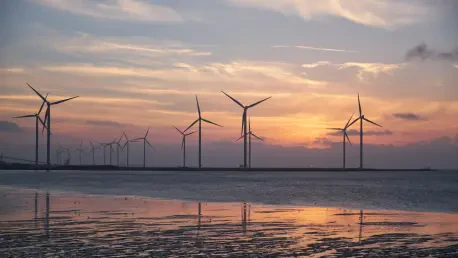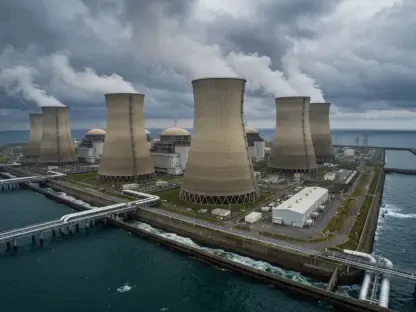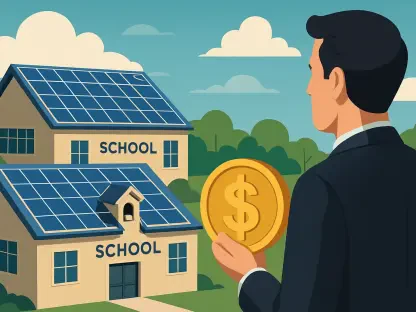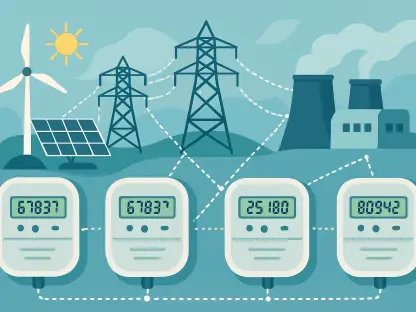As the United Kingdom races to meet its ambitious clean energy targets, including a staggering 27-29 GW of onshore wind capacity by 2030 and an even more daunting 35-37 GW by 2035, a pressing challenge emerges: how to sustain and expand renewable energy infrastructure with aging wind farms nearing the end of their typical 25-year lifespan. The concept of onshore wind repowering—replacing outdated turbines with cutting-edge, high-efficiency models—has surfaced as a pivotal strategy to address this issue. This approach not only promises to revitalize existing sites but also to significantly boost energy output while minimizing environmental disruption. Spearheaded by innovative campaigns from industry leaders, repowering is gaining traction as a cornerstone of the nation’s renewable energy future. By focusing on modernization rather than new development, this method offers a sustainable path forward, aligning with both national decarbonization goals and the urgent need for energy security amid rising demand.
The Strategic Importance of Repowering
The push for repowering onshore wind farms stems from a critical need to modernize infrastructure that is fast approaching obsolescence, ensuring the UK can keep pace with its clean energy commitments over the next decade. Unlike alternatives such as decommissioning or short-term life extensions, repowering involves installing advanced turbines that can increase energy production by three to ten times, depending on site specifics and technological advancements. This dramatic uplift in output is vital for meeting escalating energy needs while reducing reliance on fossil fuels. Moreover, reusing existing sites means less strain on untouched land, preserving natural habitats and streamlining planning processes. The efficiency of newer turbines also translates into lower carbon emissions per unit of energy produced, directly supporting national decarbonization efforts. As a result, repowering stands out as a pragmatic solution that maximizes the potential of already established wind farm locations without the environmental cost of new construction.
Beyond the technical advantages, repowering serves as a linchpin for long-term energy security in the UK, addressing the dual challenge of aging assets and growing demand. Modern turbines are not only more powerful but also more reliable, reducing downtime and maintenance costs compared to older models. This reliability is crucial as the nation transitions to a grid increasingly dependent on renewables, where consistency in supply becomes non-negotiable. Additionally, the strategic reuse of infrastructure—such as grid connections and access roads—cuts down on both financial and logistical burdens, making repowering a cost-effective option. By focusing on existing sites, the approach also mitigates the risk of public opposition often associated with new developments, smoothing the path for regulatory approvals. This blend of enhanced performance and practical benefits positions repowering as an indispensable tool in fortifying the UK’s renewable energy framework for the challenges ahead.
Economic and Social Benefits of Upgrading Wind Farms
Repowering onshore wind farms extends far beyond energy production, offering a wealth of economic opportunities that can transform local communities and bolster national growth. Industry estimates suggest that this process could create up to 27,000 new jobs, ranging from manufacturing and installation to maintenance and support services. These roles provide a significant boost to local economies, particularly in rural areas where many wind farms are located. Furthermore, the influx of investment opens doors for small businesses to engage in supply chains, fostering entrepreneurship and economic resilience. Community funding initiatives tied to repowering projects also ensure that benefits are shared directly with residents through mechanisms like shared ownership or local development grants. This economic ripple effect underscores how repowering can serve as a catalyst for broader socioeconomic progress while advancing clean energy goals.
Equally important are the social advantages that come with repowering, as it strengthens ties between renewable energy projects and the communities hosting them. By upgrading existing sites rather than seeking new locations, the process minimizes disruption to local landscapes and lifestyles, fostering goodwill among residents. Transparent communication and engagement efforts, as highlighted by industry campaigns, play a vital role in building trust and addressing concerns about technical or environmental impacts. Many repowering initiatives also commit to long-term community benefits, such as funding for local infrastructure or educational programs, ensuring that the advantages are tangible and enduring. This focus on collaboration helps to dispel misconceptions about wind energy and reinforces the notion that repowering is not just an industrial upgrade but a shared journey toward sustainability. Such social cohesion is essential for gaining the public support needed to navigate the complexities of planning and implementation.
Overcoming Challenges Through Community Engagement
The path to successful repowering is not without obstacles, as it involves intricate technical upgrades, stringent planning permissions, and careful environmental assessments that must be navigated with precision. Modernizing wind farms requires substantial investment and coordination to ensure that new turbines integrate seamlessly with existing infrastructure while adhering to updated safety and efficiency standards. Regulatory hurdles can also delay projects, as authorities balance the push for renewable expansion with concerns over noise, visual impact, and wildlife protection. These challenges underscore the complexity of repowering, which cannot be treated as a simple plug-and-play solution. Industry leaders recognize that addressing these issues demands not only technical expertise but also a commitment to transparency, ensuring that all stakeholders understand the process and its long-term value in securing a cleaner energy future.
Central to overcoming these barriers is the role of community engagement, which has emerged as a cornerstone of effective repowering campaigns across the UK. By fostering open dialogue with local residents, businesses, and officials, project developers can address misconceptions and build a foundation of trust critical for project approval and implementation. Campaigns that prioritize explaining the benefits—such as enhanced energy output and economic growth—while acknowledging potential disruptions help to align community interests with national energy goals. This collaborative approach also allows for tailored solutions, where local feedback shapes project design to minimize impact. The emphasis on partnership reflects a broader understanding that repowering is as much a social endeavor as a technological one, requiring buy-in from those directly affected. Through such engagement, the industry aims to transform potential opposition into active support, paving the way for smoother project rollouts.
Building a Sustainable Energy Legacy
Reflecting on the journey of onshore wind repowering, it becomes evident that this strategy has reshaped the landscape of renewable energy in the UK, turning aging infrastructure into powerful assets for decarbonization. The upgrades to existing wind farms have proven instrumental in boosting energy output and efficiency, while simultaneously curbing environmental impact through the reuse of established sites. Economic and social gains, from job creation to community funding, have further solidified repowering as a multifaceted solution that benefits both national ambitions and local interests. Looking ahead, the focus must shift to scaling these efforts, with policymakers and industry stakeholders collaborating to streamline regulatory processes and secure funding for widespread adoption. Accelerating community outreach and education will also remain vital to sustaining momentum, ensuring that repowering continues to be embraced as a shared vision for a cleaner, more secure energy future.









